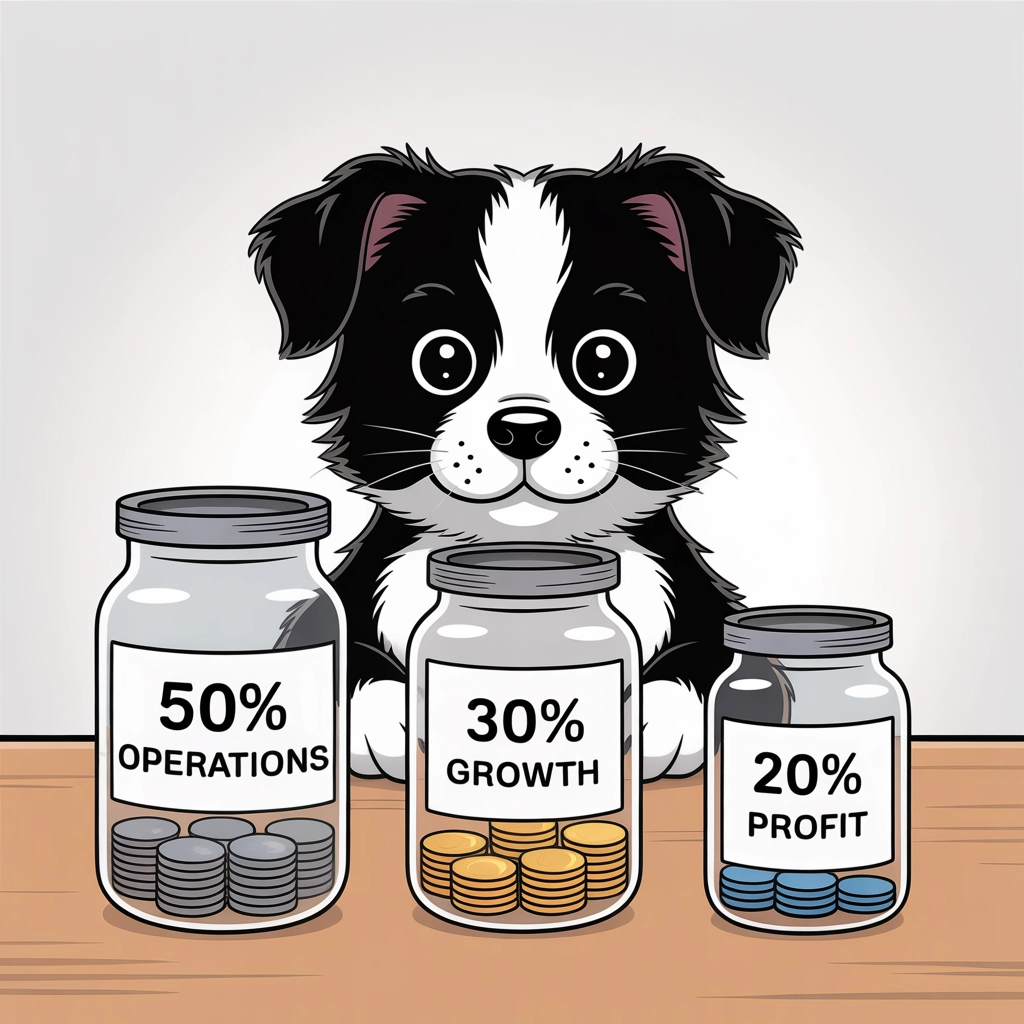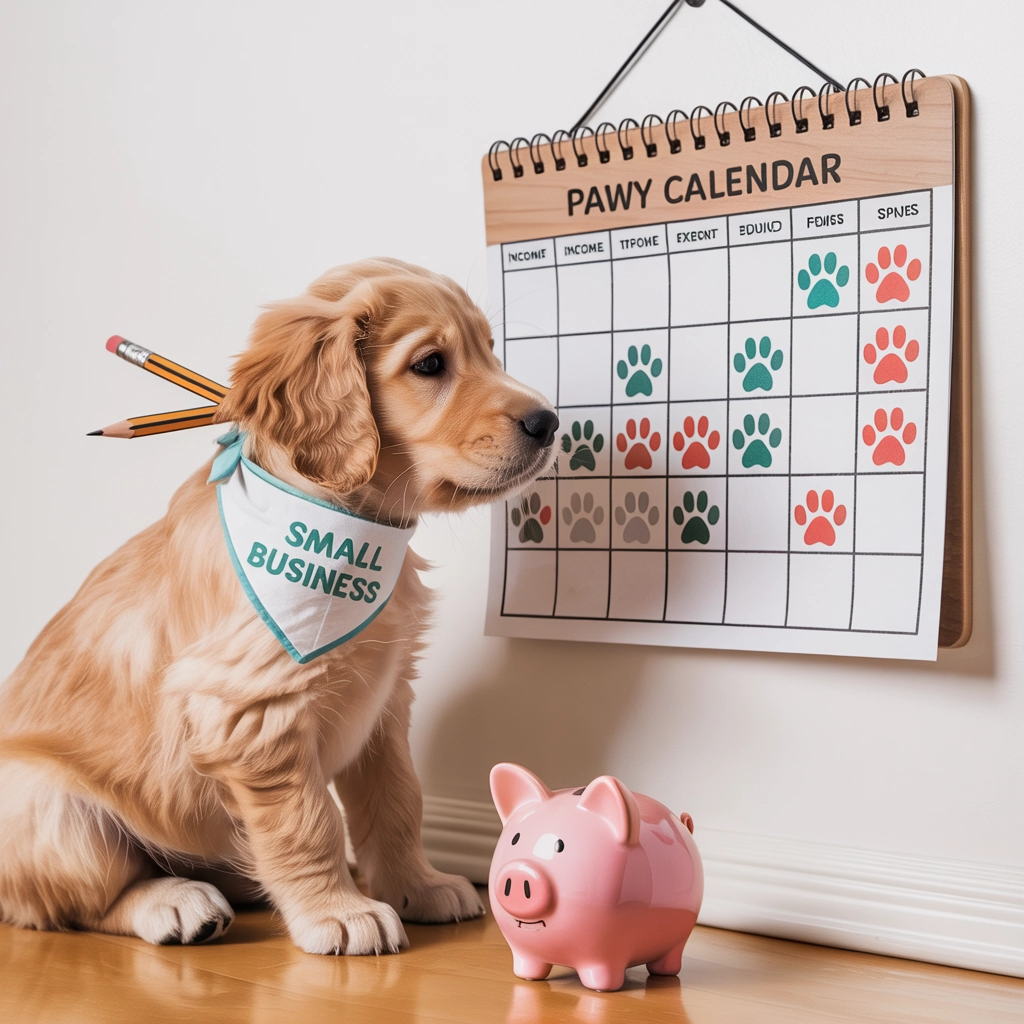Budget Smarter, Not Harder: A Simple Guide for Small Business Owners
Master your business finances with practical budgeting strategies that work for real entrepreneurs. No accounting degree required.

 🐾
🐾
Let's face it—budgeting isn't why you started your business. You had a brilliant idea, a passion for serving customers, or a skill you wanted to share with the world. But here's the truth: mastering your money is what lets you keep doing what you love. The good news? You don't need an accounting degree to budget effectively.
Why Most Small Business Budgets Fail
Nearly 82% of small businesses fail because of cash flow problems, not because their products or services were bad. The culprit is often a budget that exists only as a vague concept rather than a practical tool.
Traditional budgeting advice tends to overwhelm busy entrepreneurs with complicated spreadsheets and financial jargon. But effective budgeting isn't about perfection—it's about having a clear picture of your money that helps you make better decisions.
Step 1: Know Your Numbers (Without Drowning in Them)
Before creating any budget, you need to understand where your money currently goes. But don't worry—this doesn't require weeks of analysis.
Start by answering these three questions:
- What's your average monthly revenue over the past 6-12 months?
- What are your fixed costs (expenses that stay relatively constant regardless of sales)?
- What are your variable costs (expenses that fluctuate with sales volume)?
If you use accounting software like QuickBooks or Xero, you can pull these numbers in minutes. If not, a simple review of your bank and credit card statements will give you a solid starting point.
Remember: The goal isn't perfect accuracy but a realistic understanding of your business's financial patterns.
Step 2: Build Your Budget Framework
Now for the framework that makes budgeting manageable and useful:
The 50/30/20 Business Budget
This simplified approach divides your revenue into three categories:
50% — Essential Operations: This covers the must-haves that keep your business running: rent, utilities, inventory, essential staff, and other fixed costs.
30% — Growth & Development: This portion funds what helps your business grow: marketing, equipment upgrades, professional development, and innovation.
20% — Profit & Reserves: This money is split between owner compensation, emergency funds, and future investments.

For example, if your business averages $10,000 in monthly revenue:
- $5,000 goes to essential operations
- $3,000 is allocated for growth initiatives
- $2,000 is preserved for profit and savings
This framework gives you flexibility while ensuring you don't neglect critical areas like emergency savings or growth investments.
Step 3: Avoid These Budget-Killing Mistakes
Even with a simple framework, there are pitfalls that can derail your financial planning:
The Optimism Trap
Business owners are naturally optimistic—it's what makes us entrepreneurs! But when it comes to budgeting, excessive optimism can be dangerous.
The fix: Base your revenue projections on historical data, not best-case scenarios. If you're just starting out, research industry averages and reduce them by 20-25% for a safer estimate.
The "Set It and Forget It" Mentality
A budget isn't a one-time document you create in January and ignore until December.
The fix: Schedule monthly 30-minute budget check-ins. Compare actual numbers against projections and make adjustments as needed. This quick regular review prevents small problems from becoming financial emergencies.
The All-or-Nothing Approach
Many business owners abandon budgeting altogether after finding they can't stick to it perfectly.
The fix: Expect imperfection. A budget that you follow 70% of the time is infinitely better than no budget at all. When you miss the mark, adjust and move forward.
Step 4: Leverage Technology (Without Getting Overwhelmed)
Modern tools make budgeting significantly easier than it was even five years ago.
For solopreneurs and microbusinesses:
- Wave Accounting (free)
- FreshBooks (starts at $15/month)
- YNAB (You Need A Budget) ($14.99/month)
For growing small businesses:
- QuickBooks Online ($25-$180/month)
- Xero ($12-$65/month)
- Zoho Books ($0-$275/month)
The right tool depends on your business complexity and personal preferences, but even a simple spreadsheet is better than nothing. The key is finding something you'll actually use consistently.

Step 5: Build Financial Resilience with an Emergency Fund
The pandemic taught us all how quickly business conditions can change. An emergency fund isn't just good practice—it's essential survival equipment.
Start small: Aim to save just 1% of your monthly revenue, then gradually increase to 5-10%.
Keep it separate: Open a dedicated business savings account to prevent accidentally spending these funds.
Define emergencies: Decide in advance what constitutes a true business emergency to avoid dipping into this fund for non-critical expenses.
Even a modest emergency fund ($2,000-$5,000) can be the difference between weathering a temporary downturn and closing your doors.
Step 6: Make Your Budget Work in Real Life
Here's where theory meets practice—how do you actually stick to your budget when real life happens?
The Cash Flow Calendar
Create a simple calendar noting:
- When major payments come due (rent, taxes, loan payments)
- When large client payments are expected
- Seasonal fluctuations that affect your business
This visualization helps prevent cash flow surprises and allows you to plan for tight periods.
The Weekly Money Check-In
Spend just 15 minutes each week asking:
- What bills are due this week?
- What income is expected?
- Are any expenses trending higher than budgeted?
- Do I need to adjust any spending or delay any purchases?
This quick ritual prevents financial problems from snowballing and keeps your budget top of mind.

The Profit-First Method
Consider adopting the "Profit First" approach, where you allocate profit before expenses rather than hoping for leftovers:
- Set up separate bank accounts for Operations, Owner's Pay, Taxes, and Profit
- Distribute income to these accounts based on predetermined percentages
- Only spend what's in your Operations account for business expenses
This method forces financial discipline and ensures you're building profit into your business model.
Making It Work for Your Business
Remember that the perfect budget is the one you'll actually use. Start simple, be consistent, and refine your approach as you learn what works for your specific business.
The ultimate goal isn't a perfect spreadsheet—it's the peace of mind that comes from knowing where your money is going and having confidence that you're building a financially sustainable business.
By taking control of your finances with these practical budgeting approaches, you're not just avoiding problems—you're creating possibilities for growth, innovation, and long-term success.
Want to learn more about how to optimize your small business operations? Check out our other guides on streamlining your invoicing and cutting costs without cutting corners.
 🐾
🐾